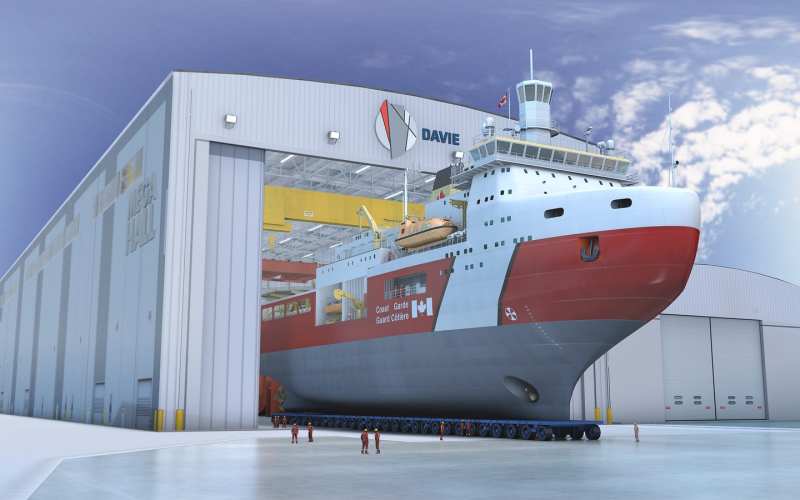The Canadian government has awarded contracts to Chantier Davie Canada (Davie) Inc. and Seaspan’s Vancouver shipyard to construct two new polar icebreakers as part of the National Shipbuilding Strategy (NSS). The Canadian government said in a press release that the move reinforces the country’s commitment to Arctic sovereignty, fleet renewal, and economic growth.
Canada’s Minister of Public Services and Procurement, the Honorable Jean-Yves Duclos, announced that Davie, Lévis, Quebec, will receive a $3.25 billion contract to construct one of the Canadian Coast Guard’s (CCG) new polar icebreakers. The vessel, Polar Max, is expected to be delivered by 2030.
Meanwhile, Seaspan Shipyards, North Vancouver, British Columbia, has been awarded a $3.15 billion contract to construct the other polar icebreaker. Seaspan is set to begin construction in April 2025. Seaspan noted in a press release that this vessel will be the first heavy polar icebreaker built in Canada in over 60 years.
Both icebreakers are expected to be among the most advanced vessels in their class, designed to operate year-round in the high Arctic in temperatures as low as -58°F. The Government of Canada noted these ships will provide critical support for Indigenous communities, Arctic research, environmental protection, and maritime emergency response.
The Seaspan-built vessel will measure 518’x92’, featuring over 40 megawatts of installed power, an ice-classed azimuth-propulsion system, scientific laboratories, and helicopter facilities. Seaspan completed the ship’s functional design in 2024, working in collaboration with Finnish Arctic vessel design specialists.
Davie’s Polar Max will be constructed with expertise from Helsinki Shipyard, which Davie acquired in 2023. The Québec-based shipbuilder said it will implement a workforce exchange program, enabling Canadian workers to gain firsthand experience from Finnish shipbuilders. Davie is also investing over $200 million in modernizing its shipyard and supporting local suppliers.
WorkBoat reached out to both shipbuliders for further specs on the new vessels.

The Canadian government said the two projects are expected to create thousands of jobs across Canada, engaging over 1,000 local shipbuilders at Seaspan and accelerating hiring at Davie. A Deloitte economic analysis found that Seaspan has already contributed $5.7 billion to Canada’s GDP from 2012 to 2023, supporting over 7,000 jobs annually, Seaspan highlighted.
“The polar icebreaker will allow us to operate in the Arctic year-round, delivering crucial services to Northern communities while strengthening Canada’s sovereignty,” said Diane Lebouthillier, Minister of Fisheries, Oceans, and the Canadian Coast Guard.
The contracts align with the recently formed International Icebreaker Collaboration Effort (ICE Pact). In July 2024, leaders of the United States, Canada, and Finland announced the Pact’s formation, a trilateral agreement to collaborate on producing polar icebreakers and enhancing Arctic and polar capabilities. The partnership's aim is to bolster the shipbuilding industries and industrial capacities of the three nations, strengthen economic and security ties, and foster mutual workforce development, according to a July 2024 statement from the then-Biden Administration.
The Candian government noted in November 2024, the three countries signed an ICE Pact Memorandum of Understanding to deepen existing cooperation, strengthen their shipbuilding industries and allow new equipment and capabilities to be produced more quickly. The government press release noted, “These 3 key Arctic countries will work more closely together to engage our allies and partners to help meet future global demand for Arctic and polar vessels.”




